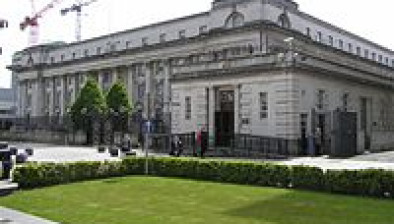William Fry: Welcome clarifications to temporary wage subsidy scheme
 William Fry unpacks recent clarifications about certain provisions of the Government’s temporary wage subsidy scheme.
William Fry unpacks recent clarifications about certain provisions of the Government’s temporary wage subsidy scheme.
The Revenue Commissioners have issued some recent welcome clarifications about certain provisions of the Government’s temporary wage subsidy scheme.
Application for the subsidy scheme – an admission of insolvency?
The main provisions of the subsidy scheme are set out in Section 28 of the Emergency Measures in the Public Interest (Covid-19) Act 2020.
That section also contains the criteria for an employer’s eligibility to avail of the subsidy scheme. One such criterion is that:
“…the business of an employer has been adversely affected by Covid-19 to a significant extent with the result that the employer is unable to pay to a specified employee the emoluments the employer would otherwise have normally paid to him or her”
Concerns were raised that this criterion (i.e. an inability to pay employees’ wages) was in effect tantamount to an admission that the business was trading while insolvent. This then raised fears that company directors of businesses who availed of the subsidy scheme could potentially face issues in relation to allegations of fraudulent or reckless trading.
Welcome clarifications
In a recent communication, the Revenue Commissioners confirmed that employers will not be deemed insolvent if they avail of the subsidy scheme, stating:
“The declaration by the employer is not a declaration of insolvency. The declaration is simply a declaration which states that, based on reasonable projections, there will be, as a result of disruption to the business caused or to be caused by the Covid-19 pandemic, a decline of at least 25% in the future turnover of, or customer orders for, the business for the duration of the pandemic and that as a result the employer cannot pay normal wages and outgoings fully but nonetheless wants to retain its employees on the payroll”
In addition, on the issue of how a business’ cash reserves could affect its eligibility for the subsidy scheme, there has been confirmation from the Revenue Commissioners that an employer that has been “hit by a significant decline in business but has strong cash reserves that are not required to fund debt, will still qualify for the scheme but the Government would expect the employer to continue to pay a significant proportion of the employees’ wages”.
Key takeaways for businesses
Here are a few points for every business to bear in mind:
- To avoid any future issues with Revenue, should they arise, after availing of this subsidy scheme, employers should keep any supporting records to demonstrate the extent of COVID-19’s negative impact on their business.
- Availing of the subsidy scheme should not of itself expose a director to a claim for reckless or fraudulent trading.
- Businesses should continue to remember the general rules to test a company’s solvency:
- cash flow test: applying a cash flow test, a company is deemed to be insolvent when it is unable to pay its debts as they fall due. Availing of the subsidy scheme may help a company in being able to pay its debts as they fall due that it would otherwise not be able to pay, thus improving its cash flow position under this test;
- balance sheet test: the balance sheet test considers if the company’s assets are insufficient to discharge its liabilities, having regard to the company’s contingent and prospective liabilities;
- if a company becomes unable to pay its debts as they fall due, or if there is a prospect (whether based on the cash flow test or the balance sheet test) that creditors will not be paid in full, the duties owed by the directors to the shareholders become secondary to an overriding duty to act in the best interests of the creditors, including contingent or prospective creditors;
- in circumstances where a company can pay its debts as they fall due, but the balance sheet shows a deficit, the first duty of the directors is to ascertain whether, if the company continues its business, the projected deficit to creditors is inevitable or if it can be reversed or reduced. This necessitates testing of all financial information available (including projections) and making an assessment of what actions can be taken to ensure at least that the deficit is not increased by their actions or inactions.






